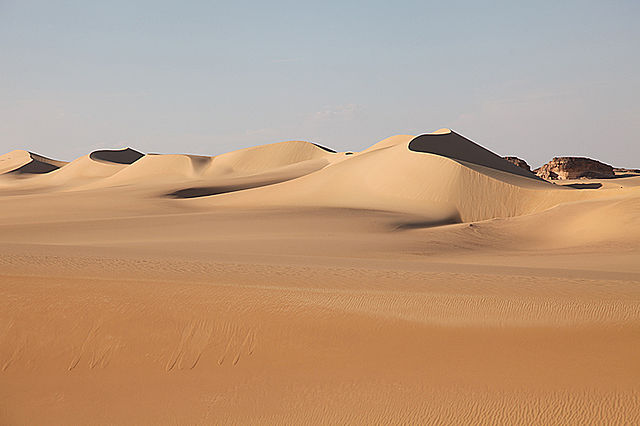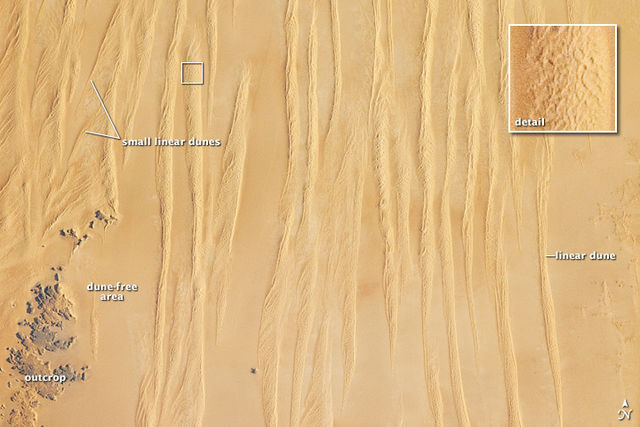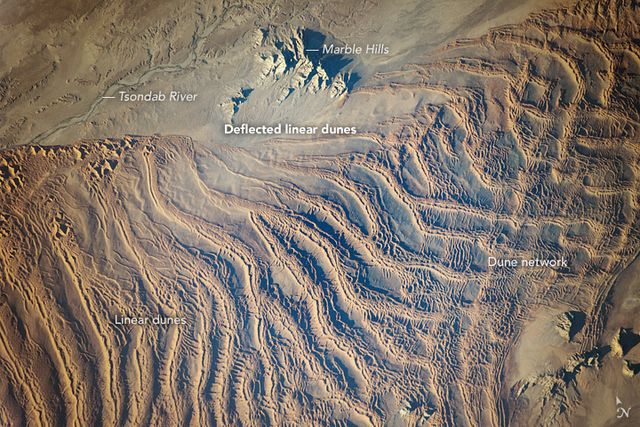The Great Sand Sea is an approximately 72,000 km2 (28,000 sq mi) sand desert (erg) in the Sahara between western Egypt and eastern Libya in North Africa. Most of the area is covered by sand dunes.
The dunes of the Great Sand Sea near Siwa, Egypt
Stony area of the Great Sand Sea.
Dune pattern in the Great Sand Sea, Egypt. NASA Earth Observatory.
An erg is a broad, flat area of desert covered with wind-swept sand with little or no vegetative cover. The word is derived from the Arabic word ʿarq (عرق), meaning "dune field". Strictly speaking, an erg is defined as a desert area that contains more than 125 km2 (48 sq mi) of aeolian or wind-blown sand and where sand covers more than 20% of the surface. Smaller areas are known as "dune fields". The largest hot desert in the world, the Sahara, covers 9 million square kilometres and contains several ergs, such as the Chech Erg and the Issaouane Erg in Algeria. Approximately 85% of all the Earth's mobile sand is found in ergs that are greater than 32,000 km2 (12,355 sq mi), the largest being the Rub' al Khali, the Empty Quarter of the Arabian Peninsula. Ergs are also found on other celestial bodies, such as Venus, Mars, and Saturn's moon Titan.
Issaouane Erg, Algeria
Linear Dunes, Namib Sand Sea
Erg Chebbi, Morocco
Satellite image of Rub' al Khali (Arabia's Empty Quarter), the world's largest erg with an area of more than 600,000 km2 (230,000 sq mi)







